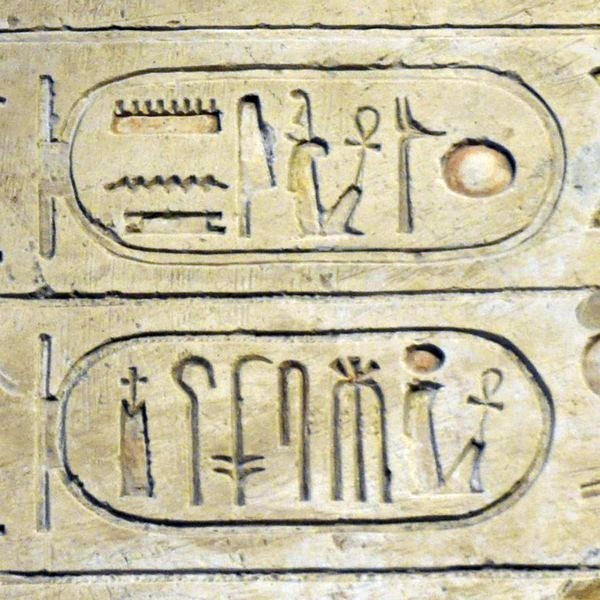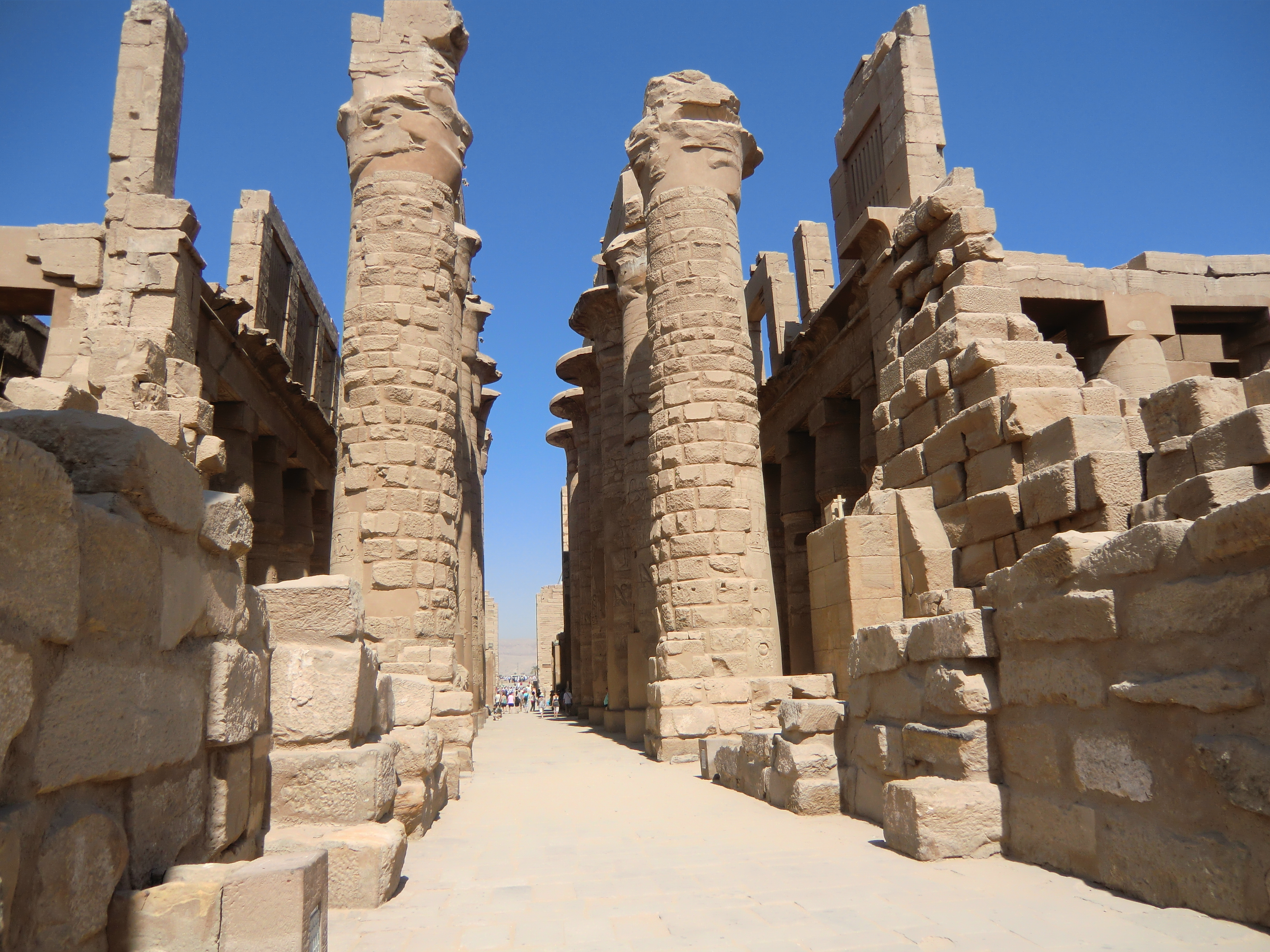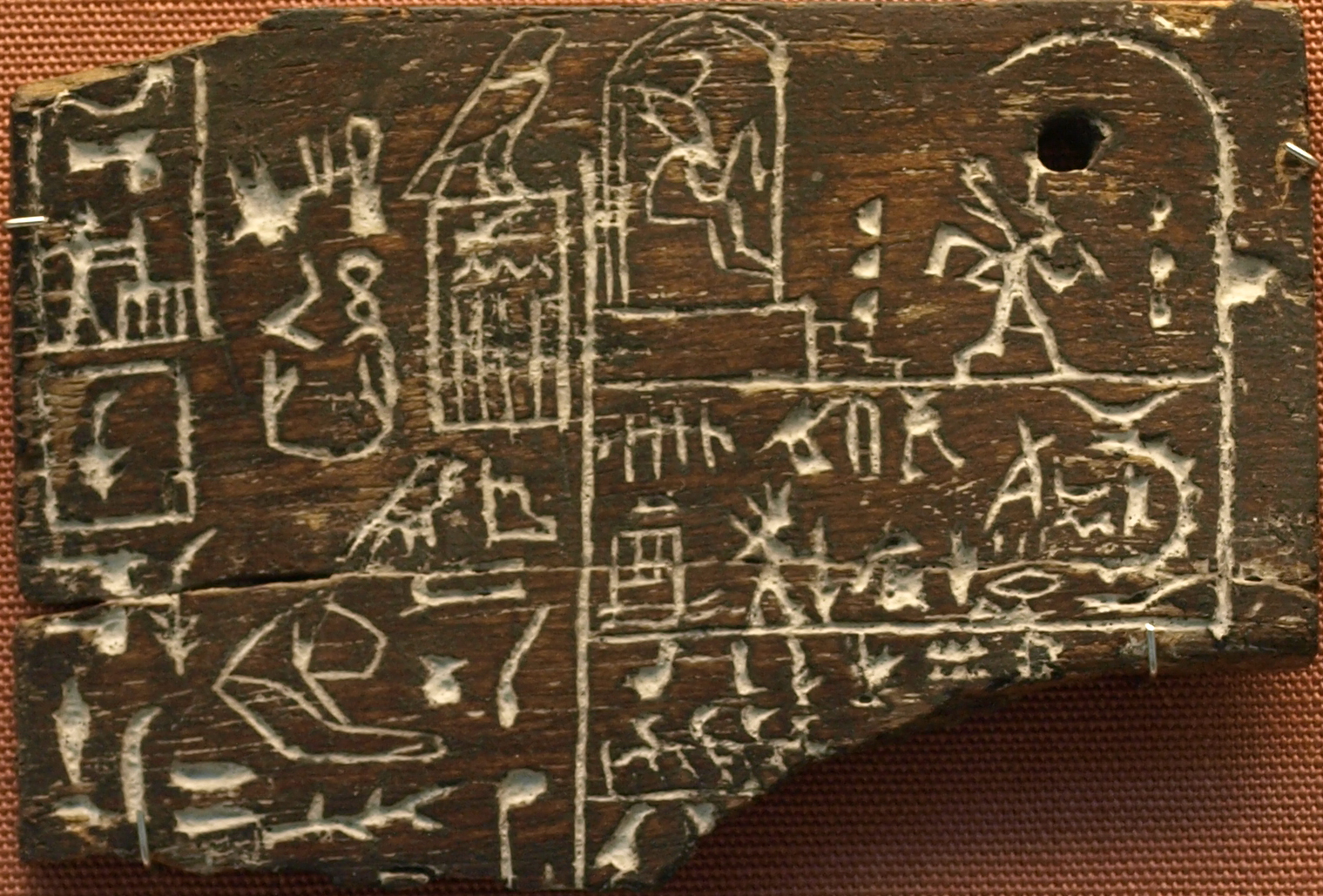|
Man-prisoner (hieroglyph)
The ancient Egyptian Man-prisoner is one of the oldest hieroglyphs from Ancient Egypt. An iconography, iconographic portrayal from predynastic Egypt eventually led to its incorporation into the writing system of the Egyptian language. Not only rebels from towns or districts, but foreigners from battle were being portrayed. The nine bows concept of internal ancient Egyptian rebels, as well as 'foreign' rebels, began with actual bows, for example under Pharaoh Djoser's feet on his seated statue, Third Dynasty of Egypt, 3rd Dynasty; (his feet rest upon 9 bows). The more prolonged use of the 'prisoner' hieroglyph in language and iconography continued into New Kingdom of Egypt, New Kingdom, and Ptolemaic Dynasty, Ptolemaic times with the prisoner hieroglyph, as a ''"foreign rebel people"'' presented and named inside of a "cartouche". The 'cartouche' was often identified on its perimeter ring with the ''fortifying blocks'' of a city fortification, representing either the people, or t ... [...More Info...] [...Related Items...] OR: [Wikipedia] [Google] [Baidu] |
Hierakonpolis Palette Fragment
Nekhen (, ), also known as Hierakonpolis (; , meaning City of Hawks or City of Falcons, a reference to Horus; ) was the religious and political capital of Upper Egypt at the end of prehistoric Egypt ( 3200–3100 BC) and probably also during the Early Dynastic Period (Egypt), Early Dynastic Period ( 3100–2686 BC). Located in Upper Egypt about 100 kilometers south of the modern-day city of Luxor, Nekhen has been the subject of extensive archeological research over the past one and half centuries, and has yielded a large number of artifacts that give a greater understanding to this period of ancient Egyptian history. The city was the center of cult worship of the god Horus, who is said to have his origins in Nekhen as its tutelary deity. Tombs, temples, breweries, houses, and other structures have all been discovered that date back to the predynastic era. The oldest known tomb with painted decoration, known as the Painted Tomb, is located in Nekhen and is thought to date to c. 3 ... [...More Info...] [...Related Items...] OR: [Wikipedia] [Google] [Baidu] |
Nubayrah Stele
The Nubayrah Stele is a mutilated copy of the Decree of Memphis (Ptolemy V) on a limestone stele. The same decree is found upon the Rosetta Stone. From 1848, it was known that a partial copy of the Decree was on a wall at the Temple of Philae, but overwritten in many places, by scenes, or damaged. The limestone stele is rounded at the top, is high, and wide.' The Nubayrah Stele is named for the present day town of Noubarya-(?) on the former Canopic branch of the Nile River; the town is southwest of Damanhur. The original ''"Nubayrah"'' was close to Damanhur. The Nubayrah Stele is located in the Egyptian Museum, no. 5576. Publication history The hieroglyph text was published, in the 1800s and early 1900s in five resources:Budge, (1989), 1929. p. 103. :# Urbain Bouriant, "La stèle 5576 du Musée du Boulaq-(now Egyptian Museum The Museum of Egyptian Antiquities, commonly known as the Egyptian Museum (, Egyptian Arabic: ) (also called the Cairo Museum), located in ... [...More Info...] [...Related Items...] OR: [Wikipedia] [Google] [Baidu] |
Egyptian Hieroglyphs
Ancient Egyptian hieroglyphs ( ) were the formal writing system used in Ancient Egypt for writing the Egyptian language. Hieroglyphs combined Ideogram, ideographic, logographic, syllabic and alphabetic elements, with more than 1,000 distinct characters.In total, there were about 1,000 graphemes in use during the Old Kingdom period; this number decreased to 750–850 during the Middle Kingdom, but rose instead to around 5,000 signs during the Ptolemaic period. Antonio Loprieno, ''Ancient Egyptian: A Linguistic Introduction'' (Cambridge: Cambridge UP, 1995), p. 12. Cursive hieroglyphs were used for Ancient Egyptian literature, religious literature on papyrus and wood. The later hieratic and demotic (Egyptian), demotic Egyptian scripts were derived from hieroglyphic writing, as was the Proto-Sinaitic script that later evolved into the Phoenician alphabet. Egyptian hieroglyphs are the ultimate ancestor of the Phoenician alphabet, the first widely adopted phonetic writing system. Moreov ... [...More Info...] [...Related Items...] OR: [Wikipedia] [Google] [Baidu] |
Ramesses III
Usermaatre Meryamun Ramesses III was the second Pharaoh of the Twentieth dynasty of Egypt, Twentieth Dynasty in Ancient Egypt. Some scholars date his reign from 26 March 1186 to 15 April 1155 BC, and he is considered the last pharaoh of the New Kingdom of Egypt, New Kingdom to have wielded substantial power. His long reign saw the decline of Egyptian political and economic power, linked to a series of invasions and internal economic problems that also plagued pharaohs before him. This coincided with a decline in the cultural sphere of Ancient Egypt. However, his successful defense was able to slow down the decline, although it still meant that his successors would have a weaker military. He has also been described as a "warrior Pharaoh" due to his strong military strategies. He led the way by defeating the invaders known as "the Sea Peoples", who had caused destruction in other civilizations and empires. He was able to save Egypt from collapsing at the time when Late Bronze Age c ... [...More Info...] [...Related Items...] OR: [Wikipedia] [Google] [Baidu] |
Ramesses II
Ramesses II (sometimes written Ramses or Rameses) (; , , ; ), commonly known as Ramesses the Great, was an Pharaoh, Egyptian pharaoh. He was the third ruler of the Nineteenth Dynasty of Egypt, Nineteenth Dynasty. Along with Thutmose III of the Eighteenth Dynasty of Egypt, Eighteenth Dynasty, he is often regarded as the greatest, most celebrated, and most powerful pharaoh of the New Kingdom of Egypt, New Kingdom, which itself was the most powerful period of ancient Egypt. He is also widely considered one of ancient Egypt's most successful warrior pharaohs, conducting no fewer than 15 military campaigns, all resulting in victories, excluding the Battle of Kadesh, generally considered a stalemate. In Ancient Greek literature, ancient Greek sources, he is called Ozymandias, derived from the first part of his Egyptian-language regnal name: . Ramesses was also referred to as the "Great Ancestor" by successor pharaohs and the Egyptian people. For the early part of his reign, he focu ... [...More Info...] [...Related Items...] OR: [Wikipedia] [Google] [Baidu] |
Levant
The Levant ( ) is the subregion that borders the Eastern Mediterranean, Eastern Mediterranean sea to the west, and forms the core of West Asia and the political term, Middle East, ''Middle East''. In its narrowest sense, which is in use today in archaeology and other cultural contexts, it is equivalent to Cyprus and a stretch of land bordering the Mediterranean Sea in Western AsiaGasiorowski, Mark (2016). ''The Government and Politics of the Middle East and North Africa''. p. 5: "... today the term ''Levantine'' can describe shared cultural products, such as Levantine cuisine or Levantine archaeology". .Steiner & Killebrew, p9: "The general limits ..., as defined here, begin at the Plain of 'Amuq in the north and extend south until the Wâdī al-Arish, along the northern coast of Sinai. ... The western coastline and the eastern deserts set the boundaries for the Levant ... The Euphrates and the area around Jebel el-Bishrī mark the eastern boundary of the northern Levant, as d ... [...More Info...] [...Related Items...] OR: [Wikipedia] [Google] [Baidu] |
Karnak
The Karnak Temple Complex, commonly known as Karnak (), comprises a vast mix of temples, pylons, chapels, and other buildings near Luxor, Egypt. Construction at the complex began during the reign of Senusret I (reigned 1971–1926 BC) in the Middle Kingdom () and continued into the Ptolemaic Kingdom (305–30 BC), although most of the extant buildings date from the New Kingdom. The area around Karnak was the ancient Egyptian ''Ipet-isut'' ("The Most Selected of Places") and the main place of worship of the 18th Dynastic Theban Triad, with the god Amun as its head. It is part of the monumental city of Thebes, and in 1979 it was added to the UNESCO World Heritage List along with the rest of the city. Karnak gets its name from the nearby, and partly surrounded, modern village of El-Karnak, north of Luxor. Name The original name of the temple was ''Ipet-isut'', meaning "The Most Select of Places". The complex's modern name "Karnak" comes from the nearby village of el-Karnak ... [...More Info...] [...Related Items...] OR: [Wikipedia] [Google] [Baidu] |
Shoshenq I
Hedjkheperre Setepenre Shoshenq I (Egyptian ''ššnq''; reigned )—also known as Shashank or Sheshonk or Sheshonq Ifor discussion of the spelling, see Shoshenq—was a pharaoh of ancient Egypt and the founder of the Twenty-second Dynasty of Egypt. Family Of Meshwesh ancestry, Shoshenq I was the son of Nimlot A, Great Chief of the Ma, and his wife Tentshepeh A, a daughter of a Great Chief of the Ma herself; Shoshenq was thus the nephew of Osorkon the Elder, a Meshwesh king of the 21st Dynasty. He is generally presumed to be the Shishak mentioned in the Hebrew Bible, and his exploits are carved on the Bubastite Portal at Karnak. Chronology The conventional dates for his reign, as established by Kenneth Kitchen, are 945–924 BC but his time-line has recently been revised upwards by a few years to 943–922 BC, since he may well have lived for up to two to three years after his successful campaign in Israel and Judah, conventionally dated to 925 BC. As Edward We ... [...More Info...] [...Related Items...] OR: [Wikipedia] [Google] [Baidu] |
Branch (hieroglyph)
The ancient Egyptian Branch hieroglyph, also called a Stick, is a member of the trees and plants hieroglyphs. The branch is an Egyptian language biliteral with the value ''(kh)t'', (khet)-(ḫt); it is an ideogram-(determinative), for wood, tree, and the linear measure (=100 cubits). The hieroglyph is described as a branch without leaves. As the value (kh)t, it is often complemented in a hieroglyphic block with ''kh''–("sieve"), Aa1 and ''"t"''–( bread bun). X1 Iconographic usage Pharaonic usage Pharaoh Nectanebo II used the branch hieroglyph for his Nomen name of ''Nakhthoreb'', "Strong is His Lord, Beloved of Hathor". Pharaoh Nectanebo I's nomen was ''Nekhtnebef'', "Strong is His Lord." Old Kingdom usage Two labels are known from the Old Kingdom showing usage of the ''branch hieroglyph'', one by Pharaoh Den, one by Semerkhet. The usage on the labels shows the branch hieroglyph in a more archaic form. Rosetta Stone usage of branch--"khet" In the 198 BC, ... [...More Info...] [...Related Items...] OR: [Wikipedia] [Google] [Baidu] |
Demotic Egyptian
Demotic (from ''dēmotikós'', 'popular') is the ancient Egyptian script derived from northern forms of hieratic used in the Nile Delta. The term was first used by the Greek historian Herodotus to distinguish it from hieratic and Egyptian hieroglyphs, hieroglyphic scripts. By convention, the word "Demotic" is capitalized in order to distinguish it from demotic Greek. Script The Demotic script was referred to by the Egyptians as 'document writing', which the second-century scholar Clement of Alexandria called 'letter-writing', while early Western scholars, notably Thomas Young (scientist), Thomas Young, formerly referred to it as "wikt:enchorial, Enchorial Egyptian". The script was used for more than a thousand years, and during that time a number of developmental stages occurred. It is written and read from right to left, while earlier hieroglyphs could be written from top to bottom, left to right, or right to left. Parts of the Demotic Greek Magical Papyri were written with a ... [...More Info...] [...Related Items...] OR: [Wikipedia] [Google] [Baidu] |
Pr (hieroglyph)
Pr (𓉐 Gardiner sign listed no. O1) is the hieroglyph for 'house', the floor-plan of a walled building with an open doorway. While its original pronunciation is not known with certainty, modern Egyptology assigns it the value of ''per'', but purely on the basis of a convention specific to the discipline. However, the Ancient Greek rendering of the title ''pr-`3'' as suggests the reconstruction of the historical ( Late Egyptian) pronunciation as *''par'', see Pharaoh#Etymology. Pr combined with an associated "personal name", god, or location becomes the ''"house of .... ."'' An example for pharaoh Setnakhte is the city of: Pr-Atum, (city of Pithom). Pr and ankh-(life) is a "combination hieroglyph" and is the "word" for ''house of life''. The "house of life" is a library for papyrus books-(scrolls), as well as a possible scriptorium. The shape of ''pr'' in beginning dynasties had variations in the shape of a square, with the opening. See Garrett Reference for tomb ... [...More Info...] [...Related Items...] OR: [Wikipedia] [Google] [Baidu] |









